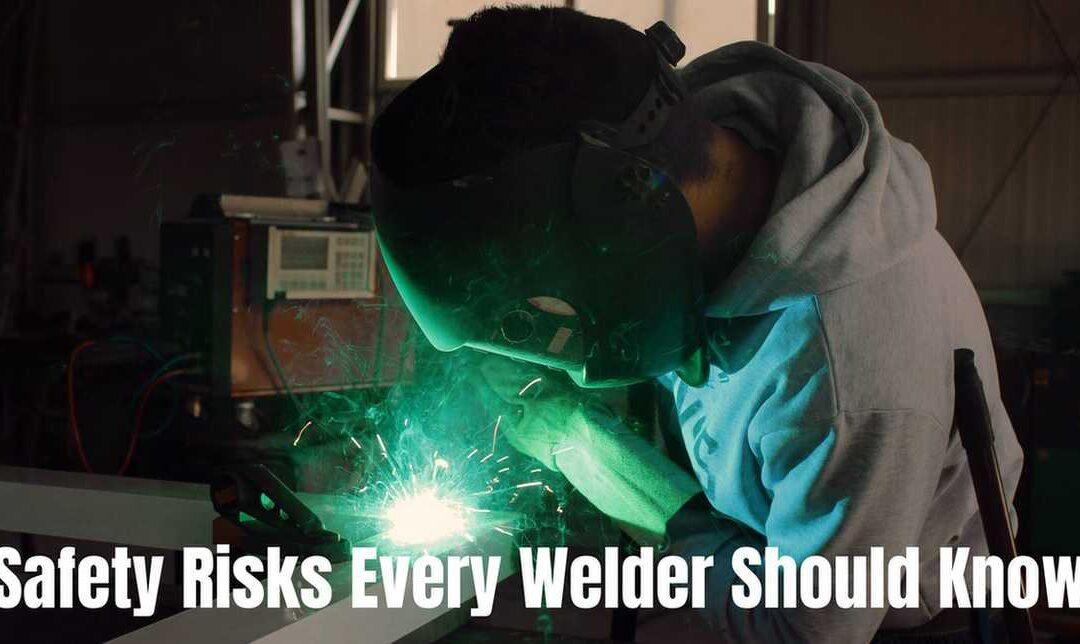Welding is a hazardous job with very high risks involved. Millions of workers are subjected to safety risks involved in welding. At the same time, we cannot eliminate the welding profession since it is a job that our society needs. We must encourage workers to take as many preventive measures as possible. Providing proper training and educating workers on the safety risks are a couple of ways to equip them to face the dangers of welding.
Informing welders about safety risks is an essential step toward preventing any accidents from taking place. They need to know what to avoid and how to protect themselves from unseen dangers. Every welder should be aware of the risks involved. In this article, we will inform you about safety risks that a welder may potentially have to expose themselves to. Let’s dive in.
Table of Contents
1. Confined Space
Working in a confined space is a health hazard. There is a lack of oxygen in the room, followed by the fact that you are working with inert gases while welding. This can be extremely dangerous and a safety hazard. Gasses tend to react with each other and may potentially create harmful chemicals like rust which is why a ventilated environment is crucial.
Oxygen inside tanks and pipes makes it all the riskier. To avoid this, try to find an alternative to working in such spaces. If that is not attainable, use a safety system of work. There are also special welding helmets for tight spaces. It is always recommended to use all safety gears while welding
2. Fire And Explosions
Before you begin welding, you should remove all flammable material from the area you work in, such as wood and fabric. Any hot work executed during welding should be monitored and done very carefully. Although hot work cannot be done anywhere safely and must have a dedicated space, it is possible to keep a close eye on clear inflammable material.
Welders should also monitor hot work until an hour later to ensure no sparks or small flames have been ignited or are on the verge of igniting. Another health hazard under this is the smoke from sparks or hot work executed.
3. Electrical Hazard
Welding naturally requires an electrical circuit as a part of the welding process. Therefore, whenever a welder handles electrical equipment, they may be exposed or at risk of receiving electrical shocks. Electrical circuit breakers can protect welders from getting electrocuted. The welder is responsible for ensuring that the equipment is free from defects.
Welders are also instructed to report any as soon as one is spotted. Avoid welding in damp areas and inside metal structures to decrease the chances of electric shocks. An insulating mat would be helpful in this instance.
4. Physical Hazards
A lot of accidents tend to be the cause of slips and trips. This can also be because of inadequate arrangement or structure of the workplace that can cause a welder to slip and fall. Companies should work towards managing this to minimize or eliminate the risks of tripping over things like wires, imbalanced flooring, etc. It is not costly. It requires a lot of care and monitoring, which is crucial to implement in a welding environment.
Other physical hazards include cuts which are highly common due to the nature of the profession. Crushed toes and crushed fingers also happen a lot because of the involvement of dealing with or carrying heavy objects. You can prevent this by using protective gear or PPE (Personal Protective Equipment) at all times and at all costs.
Conclusion of Safety Risks While Welding:
Welding in a confined space can be dangerous due to the lack of ventilation since there is a dealing of inert gasses, which can make toxic chemicals. There are also huge risks of fire and explosions, especially when you conduct hot work. Since welding requires handling electrical equipment, this increases the chances of getting electrocuted.
Other physical accidents are cuts, burns, slips, and crushed fingers or toes. Therefore, always wear welding gloves and working boots during welding. Being educated on the risks is essential to ensure you minimize the chances of any of these events taking place. We hope this article helped give you enough insight into the safety risks involved in welding. Thank you for reading!

James is a welding expert, accomplished author, and trusted guide with over 8 years of experience in the industry. With his in-depth knowledge and engaging writing style, James has become a true authority in the field, offering readers and clients invaluable expertise and insights to take their welding skills to new heights.

